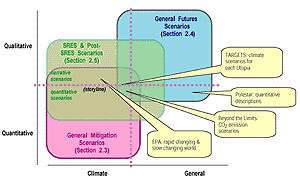
Figure 2-1: Relationship among the three groups of literature reviewed
in Chapter 2.
Climate change assessment addresses a highly complex set of interactions between human and natural systems, a scientific challenge that is compounded by the cumulative and long-term character of the phenomenon. While the world of many decades from now is indeterminate, scenarios offer a structured means of organizing information and gleaning insight into the possibilities. Scenarios can draw on both science and imagination to articulate a spectrum of plausible visions of the future and pathways of development. Some scenarios are assumed to evolve gradually and continuously from current social, economic, and environmental patterns and trends; others deviate in fundamental ways. A long view of a multiplicity of future possibilities is required to consider the ultimate risks of climate change, assess critical interactions with other aspects of human and environmental systems, and guide policy responses.
The term “scenarios” appears in two distinct streams of inquiry, one based on qualitative narrative and the other on mathematical models. Qualitative scenarios are primarily literary exercises, aimed at holistic and integrated sketches of future visions and compelling accounts of a progression of events that might lead to those futures. Quantitative, formal models seek mathematical representation of key features of human and/or environmental systems in order to represent the evolution of the system under alternative assumptions, such as population, economic growth, technological change, and environmental sensitivity. Qualitative scenarios have a greater power to posit system shifts, to explore the implications of surprise, and to include critical factors that defy quantification, such as values, cultural shifts, and institutional features. On the other hand, qualitative scenarios may appear arbitrary, idiosyncratic, and weakly supported. Model-based scenarios are useful for examining futures that result from variations of quantitative-driving variables, and they offer a systematic and replicable basis for analysis.
A first wave of global assessments began in the 1970s. Ambitious global modelling exercises aimed to forecast the behaviour over many decades of development, resource, and environmental systems, and to assess resource constraints (Meadows et al., 1972; Mesarovic and Pestel, 1974). The Latin American world model stressed social and political concerns, rather than physical limits, by positing a normative egalitarian future to examine the actions required to achieve it (Herrera et al., 1976). A second wave of integrated global scenario analyses responded to new concerns about sustainable development and the future (WCED, 1987). Many of these were in the qualitative tradition (Svedin and Aniansson, 1987; Toth et al., 1989; Milbrath, 1989; Burrows et al., 1991; Kaplan, 1994; Gallopin et al., 1997; WBCSD, 1997; Bossel, 1998). In addition, stimulated largely by the climate issue, there have been a number of new models that quantitatively link energy and other human activities to atmospheric, oceanic, and terrestrial systems (e.g., Rotmans and de Vries, 1997). Finally, scenario studies have begun recently to synthesize the modelling and qualitative approaches, in order to blend structured quantitative analysis with textured and pluralistic scenario narratives (Raskin et al., 1998; Nakicenovic et al., 2000).
IPCC GHG emission scenarios were prepared for the first assessment report of 1990. These initial scenarios were updated and extended, and led to the publication in 1992 of alternative emissions scenarios for the period 1990 through 2100 (Leggett et al., 1992; Pepper et al., 1992). These so-called IS92 emission scenarios were used by the IPCC to assess changes in atmospheric composition and climate over this time horizon. Analysts have used the IS92 scenarios, and particularly IS92a, as the preferred reference scenarios for mitigation and stabilization studies. A subsequent IPCC evaluation of the IS92 scenarios (Alcamo et al., 1995) found that for the purposes of driving atmospheric and climate models, the carbon dioxide (CO2) emissions trajectories of the IS92 scenarios provided a reasonable reflection of variations found in the open literature. However, the review found that these scenarios should not be used for evaluating the consequences of interventions to reduce GHG emissions since the scenarios have insufficient sectoral and regional detail for careful analyses. This review also took into account criticism by Parikh (1992) who suggested the need for a more coherent approach and scenarios that show improved equity between the developed and the developing countries.
The 1995 review also emphasized the need for analysts to consider the full range of IS92 emissions scenarios, rather than a single “business-as-usual” reference scenario. The uncertainties in long-range future assumptions make the assignation of a most-probable trajectory problematic.
In 1996, the IPCC initiated a process for establishing a new set of reference emissions scenarios. The new scenarios are described in the IPCC Special Report on Emissions Scenarios (Nakicenovic et al., 2000). These are designed to be non-mitigation or reference scenarios, that is, scenarios in which additional policy initiatives aimed specifically at lowering GHG emissions are assumed to be absent.
|
|
Owing to fundamental uncertainties, it is impossible to predict or forecast the long-range global future, even with the most sophisticated methods. Long-range indeterminism implies that
probabilities cannot be rigorously assigned for either a given set of driving assumptions or the likelihood of structural shifts in societies a
nd natural systems. Consequently, instead of a single “business as usual” scenario, multiple baseline scenarios are needed to scan a spectrum of plausible possibilities in order to guide the formulation of robust policies that are not geared to an overly rigid sense of where the world is heading.
To account for the wide variety of possible futures and the large uncertainties involved in such forward projections, the SRES team opted for a multiple baseline approach.2 It also decided to fuse a qualitative, narrative approach with a more formal approach with different models, to guarantee structural variance and methodological diversity in the scenarios. As such, the SRES-scenarios combine elements from both the more story-like scenarios discussed in Section 2.4 below, and the more model-based scenarios discussed in Section 2.3. The relationship between these three kinds of scenarios is shown in Figure 2.1.
|
Other reports in this collection |